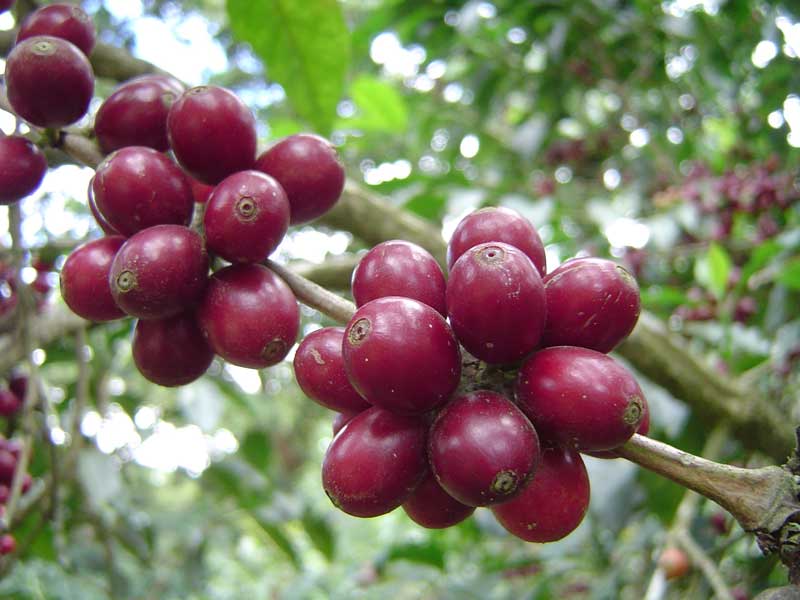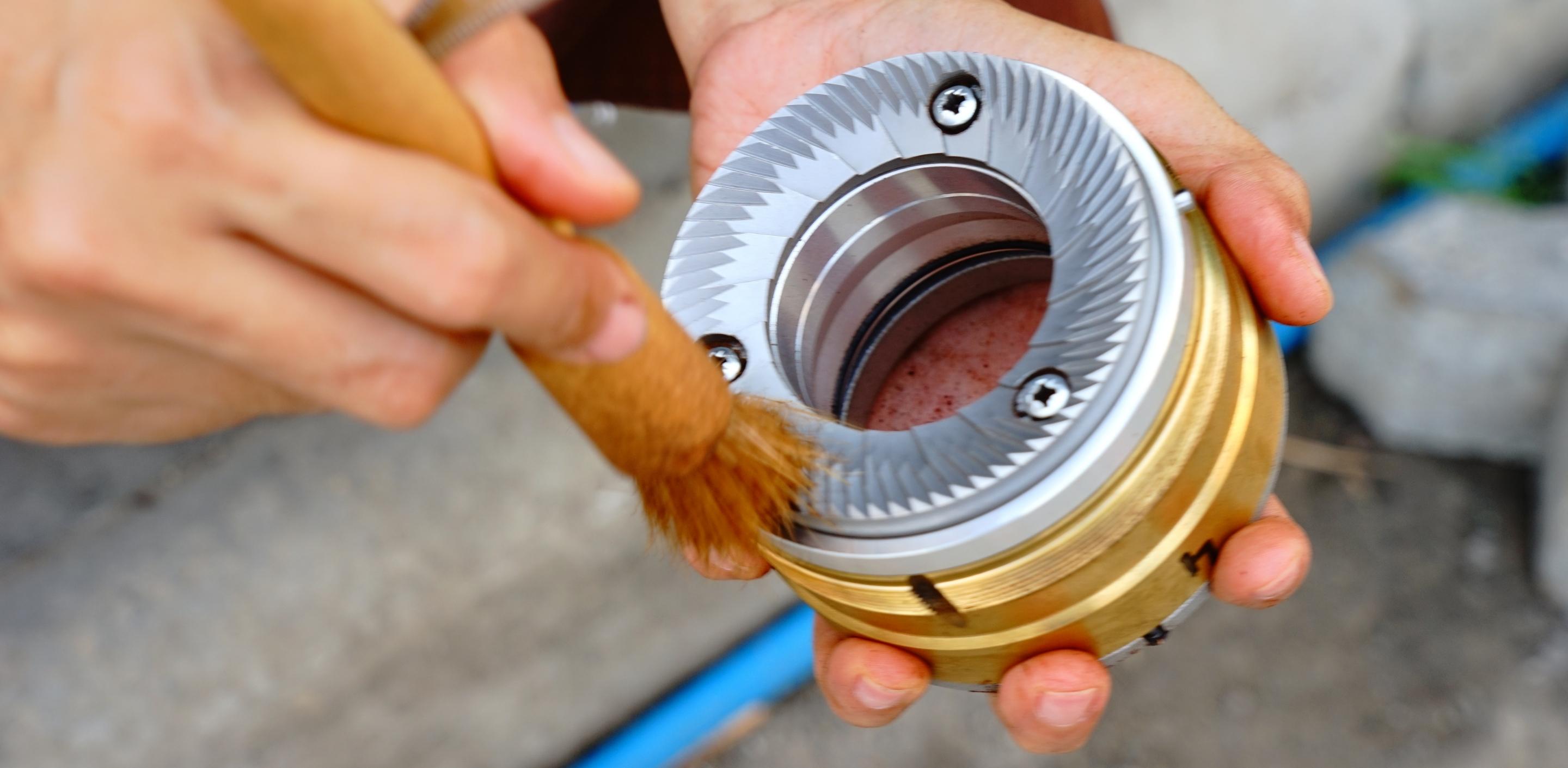Coffee Beans: Where do they come from?

The question “Where do coffee beans come from?” can be answered in a variety of ways. Perhaps you’d like to know where coffee beans originated, or a bit more about the development of coffee culture? Perhaps your question is more along the lines of how coffee grows, where do coffee beans grow, how coffee beans are harvested or how coffee beans are processed.
For the answers to these questions and more, read on!
Where did coffee beans originate from?
Although certainty about where coffee beans originated - and when they were first made into a beverage - is shrouded by the mists of time, and myths and legends about its discovery in Ethiopia by a goat herder continue to circulate, what we do have records of is the history of western coffee houses, and their precursors in Arabia. The spread of coffee throughout Europe from Venice is well-documented from the early 17th century, and before that its widespread use throughout the Arabian peninsula is widely known, with the earliest recorded cultivation happening in Yemen in the 13th century.
The development of coffee culture
From the very origins of the coffee house in the western world was created a place that brought people together. Philosophers, artists and intellectuals were drawn to coffee houses for the beverage, for discussion, and for vigorous debate with their peers in their associated fields.
From the first Venetian coffee houses in 1615, Italians extended the concept of coffee from one of catering for the elitist individuals of society, to a culture where all individuals who desired to be part both of the intoxication of the coffee beverage and the community at large could be. And thus the coffee house became a place of lively culture and community where friends, neighbours and others could meet and exchange a few words, catch up on gossip, play cards and enjoy music. Then, Italians completely changed the concept of coffee with the invention of espresso.
Today, espresso-style coffee is recognised for the incredible contribution it has made to Italian culture. Enjoyed by all, it has become a part of daily life in Italy and is treated with a level of seriousness, passion and necessity. For much of the rest of the world, the situation is not much different, as coffee is now a cultural phenomenon that has spread across the world.
Coffee is particularly adept at providing a social quality of life, especially within the frenetic modern western lifestyle. Current research shows that as a result of people working more and being out of the family home for longer hours, they are searching for other avenues of finding meaning and community, and coffee fits the bill nicely.
Where do coffee beans come from?
Coffee beans are seeds of the Coffea plant that are used in an extraction to make coffee. What we know as beans are actually the pips inside the fruit. The coffee fruit, which is known as a cherry, is classified (like ordinary cherries) as a stone fruit. Despite the fact that coffee beans are not technically beans, but rather seeds, they are referred to as such due to their resemblance to common beans.
The fruits (cherries) contain two stones with flat sides together. A small percentage of cherries have a single seed rather than the usual two. This is known as a "peaberry''. Peaberries occur only 10% to 15% of the time, and it is a widely held (but scientifically unproven) belief that they have more flavour than regular coffee beans.
The two most important varieties of coffee plant grown for economic harvesting are Arabica and Robusta; Arabica accounts for close to 60% of global coffee production, while Robusta accounts for around 40%. Arabica is a more acidic variety of coffee bean, often demonstrating fruity notes, and contains 0.8–1.4% caffeine, while Robusta beans contain 1.7–4.0% caffeine, are far less acidic and more prone to woody flavours.
Where do coffee beans grow?
The “Bean Belt” is the equatorial region of the world between the tropics of Cancer and Capricorn where coffee beans grow. This area includes such well-known coffee growing regions as Kenya and Ethiopia, Colombia and Brazil, Papua New Guinea and India, among others.
Average temperatures between 15 and 30°C are appropriate for coffee growing, with Arabica preferring slightly cooler and Robusta slightly higher temperatures. Coffee trees require between 1500 and 3000 mm of yearly rainfall, with Arabica requiring less than other types. While Robusta coffee may be cultivated from sea level to approximately 800 metres, Arabica thrives at higher elevations and is frequently grown in mountainous locations.
Coffee trees grow to a height of 5–10 m (16–33 ft). As the tree ages, it produces less fruit and gradually loses its pest and disease resistance. Coffee trees take a couple of years to grow and mature before they produce a crop of cherries.
Coffee is a self-pollinating tree that blooms in a spectacular display of honeysuckle-like flowers. Each year, millions of flowers bloom for a few days following the first significant rainfall of the season; the flowers then wither and fall from the trees. This flowering is a vital stage of the growth cycle because it results in the formation of a node at the location of each bloomed flower. Every one of these nodes will produce a single coffee cherry, which holds the valuable coffee beans we enjoy every day.
Heavy rain is critical early in the season when the fruit is developing, and less so later in the season as the fruit ripens. The coffee cherries begin life green, and gradually become red or yellow towards the end of the season as they ripen. This ripening process is quite inconsistent; some cherries will ripen quickly, while others take longer. This means that at any time, there could be under-ripe, ripe, and possibly over-ripe cherries on the same tree - even on the same branch! If the cherries are not picked, there may even be the next season’s flowers there too.
Coffee plants are commonly grown in rows that are a few feet apart (depending on the desired density chosen by the farmer). Because coffee requires specific conditions to thrive, some farmers plant other trees around them, such as shade trees or other cash-crop trees, such as orange trees, or plant the coffee on the sides of hills. Coffee is naturally found growing under rainforest canopies, so growing them in conditions of shade and water that replicate this climate is most desirable.
How coffee beans are harvested
Because coffee cherries are ideally picked at their ripest, harvesting coffee is often an endeavour undertaken by hand, as both ripe and under-ripe berries are almost always present at the same time. Picking out only the ripe coffee cherries by hand is known as "selective picking". The alternative is "strip-picking," which removes all of the fruit from a limb at once. After strip-picking, a harvest must be sorted in order to achieve a high quality. “Selective picking”, since it is far more discriminating, typically results in a higher quality of coffee.
While the vast majority of the world’s coffee continues to be picked by hand, either selectively or with strip-picking, some small amount of farms have moved to using motorised equipment to harvest coffee. In Australia, for example, massive upside-down U-shaped harvesters drive over rows of coffee plants, knocking off (mostly) the ripe coffee cherries by hitting the plants with rods attached to rotating poles. The cherries fall into conveyors and are transported back to the sorting station. This method of harvesting is completely indiscriminate, and a crop will always contain a variety of under-ripe, ripe, and often some over-ripe cherries, meaning that sorting the cherries afterwards becomes a crucial part of the process.
When are coffee beans harvested?
Harvesters that use the selective method know when to pick coffee beans because of their rich red colour. Optimally, only these mature cherries make it into specialty coffee lots, and the quality benefits. Throughout the harvest season, which can last four to six months, coffee pickers make repeated passes, about every 8 to 10 days as the coffee cherries continue to ripen irregularly.
Harvesting happens in countries north of the equator between September and March. Below the Equator, harvesting occurs from April to August. There are two flowerings and harvests per year in some regions where there are no clearly defined wet and dry seasons. One of these countries is Kenya, which has both a primary crop and a "fly" crop that is often much smaller than the primary crop.
Typically though, there is only one significant harvest per year, and it is labour intensive. Between the irregular ripening, shade-grown conditions, and sloping terrain, coffee harvesters have a great deal to contend with.
How coffee beans are processed
Coffee berries are primarily processed using two methods, “wet/washed” and “dry/natural”. Other methods, such as “semi-washed”, “anaerobic fermentation” and “honey process” exist, but are really just variations on the theme of “wet” and “dry”, or combinations of some of the elements of both.
Wet Process
The first, "wet" or "washed" process, has traditionally been practised in Central America and parts of Africa. The flesh of the cherries is separated from the seeds, which are then fermented (soaked in water for two days). This softens the mucilage, a sticky pulp residue that remains attached to the seeds. The mucilage is then washed away with water. Water processing is quick and efficient, but uses a great deal of water. The result is usually a clean, crisp taste in the cup.
Dry Process
The "dry processing" or “natural” method, which is less expensive and easier to implement, was historically used for lower-quality beans in Brazil and much of Africa, but it now commands a premium when done properly. Twigs and other foreign objects are removed from the berries, and the fruit is then spread out in the sun for 2–3 weeks on concrete, bricks, or raised beds, turning regularly for even drying. The process takes longer, but is considerably less resource intensive than washed methods, but results in a sweet, juicy coffee.
While these methods are the most commonplace, there are also some rather unusual ones out there, but we'll get into that in a future blog article.
We hope we've sufficiently answered the question of where coffee beans come from for you. We'd love to elaborate on some of these subjects at a later date, so if you have any comments or would like to hear more about a particular topic, please let us know!





Leave a comment